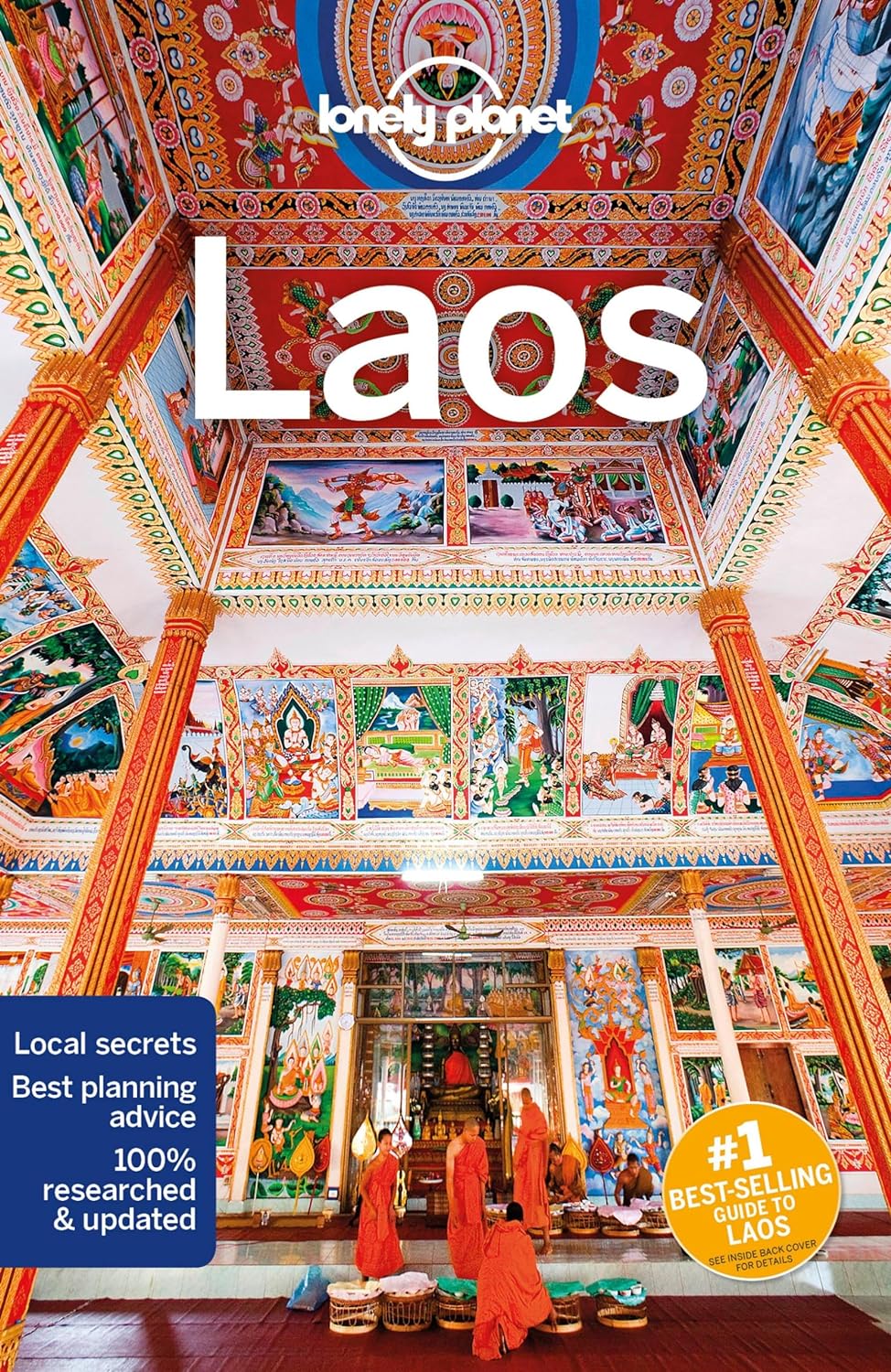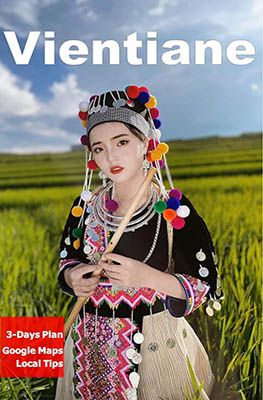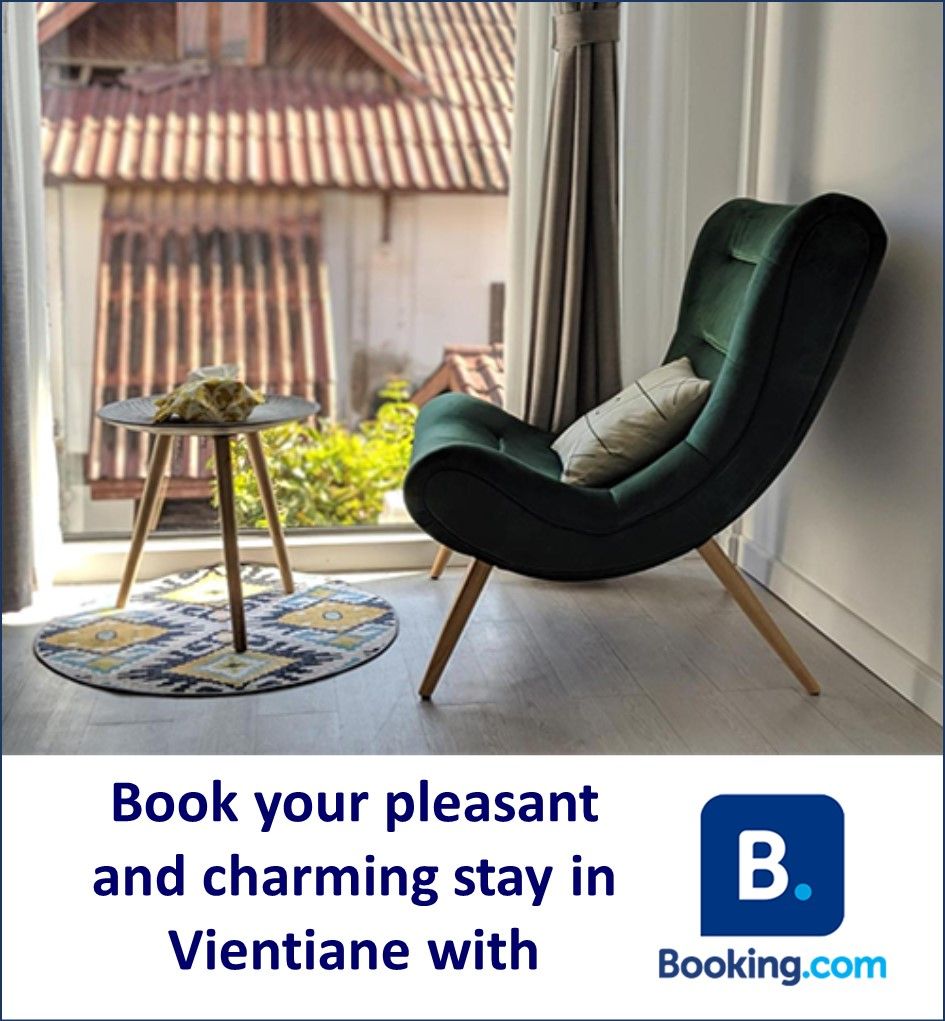During our tour of Laos, we also visited Vientiane, the country’s charming capital. Vientiane is a city steeped in history, culture, and a relaxed lifestyle. Over the past twenty years, significant new construction has emerged due to large-scale Chinese building projects. However, you can still find a unique blend of colonial French influences and Buddhist traditions. What particularly appealed to us is the laid-back ambiance that is characteristic of many cities in Southeast Asia, apart from the loud honking in the busy traffic. Vientiane lies on the backpacker route from Laos to Thailand, but this city on the banks of the Mekong is more than just a border town!
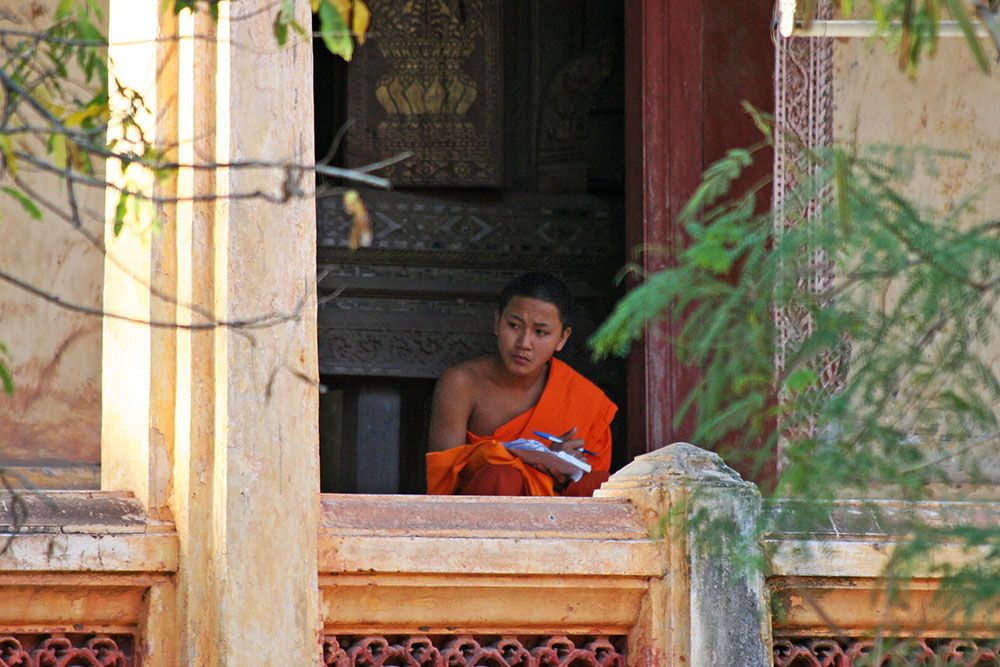
History of Vientiane
The history of Vientiane dates back to the 6th century. In the fertile valley on the banks of the Mekong, the Mon people founded a settlement that grew into present-day Vientiane. For much of its history, Vientiane fell under the rule of the mighty Khmer empire, which left its mark on the region with the construction of temples and irrigation systems.
Vientiane came under Siamese control in 1779 and was later destroyed by Siamese armies in 1827. The period of Siamese domination ended with the Franco-Siamese War in the late 19th century. Laos then became a French colony. The French rebuilt the city and designated it as the capital of the French protectorate of Laos in 1899. French colonization left a lasting influence on Vientiane, introducing colonial architecture, educational institutions, and infrastructure.
During the Second World War, Vientiane was occupied by Japanese troops and later recaptured by French paratroopers. Vientiane became the national capital of the new independent state of Laos in 1953. In the subsequent decades, the city experienced a period of growth and development, solidifying its role as the political, economic, and cultural center of Laos. Since the beginning of the new millennium, Vientiane’s population has doubled. Along with a massive wave of Chinese investment, this has led to growing pains. Nonetheless, the city has managed to retain much of its charm.
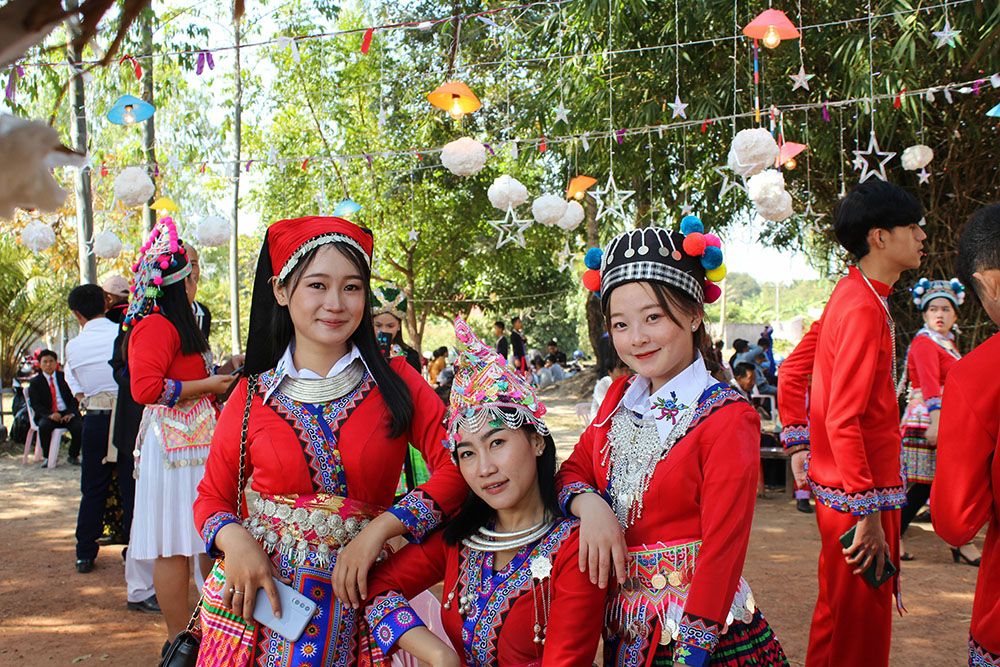
Highlights of Vientiane
Vientiane offers plenty to keep you entertained for several days. During your stay, be sure to visit the historical sights, including some of the many temples. Additionally, explore local markets such as Talat Sao and Talat Khouadin to experience the local culture. Sample the local cuisine: enjoy the diverse and tasty Laotian dishes in local restaurants and food stalls. End the day by the Mekong River. Take a leisurely stroll along the banks and admire the beautiful sunsets at one of the many cosy bars.
The capital of Laos has grown into a substantial city. However, many of the attractions can be visited on foot. Another option to explore the city is by bicycle. Cycling in Vientiane has become increasingly popular in recent years. There are many places where you can rent a bicycle. Additionally, you can book guided half-day or full-day bike tours. You’ll cycle with a local guide to remote spots in the city and just beyond. Finally, as in many cities in Laos, it’s possible to rent a scooter in Vientiane. The advantage of a scooter is that you can independently visit the sights outside the city. Whichever form of transport you choose, there are several attractions in Vientiane that you shouldn’t miss:
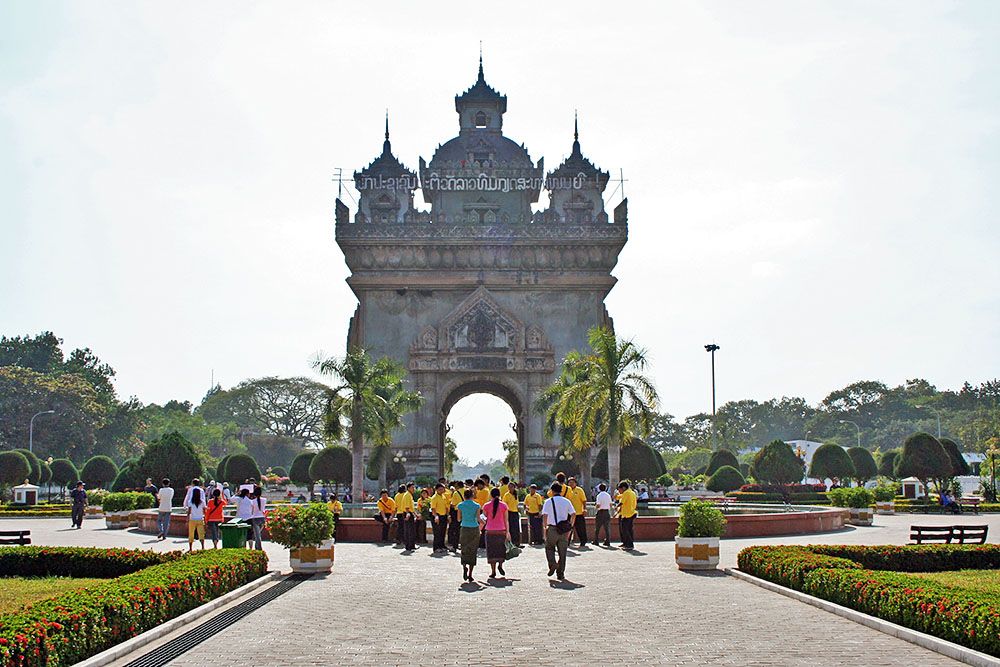
Patuxai
Patuxai is an imposing triumphal arch built to honor those who fought for Laos’ independence. The “Gate of Triumph” was constructed between 1957 and 1968. The architectural style of the arch combines traditional Laotian design elements with French influences. Therefore, the structure is also known as the “Arc de Triomphe of Vientiane.”
From the top of the triumphal arch, you have a panoramic view of the city: the vibrant streets, green parks, and the graceful Mekong winding through the city. There are also some shops and stalls. Patuxai is also a meeting place for the local population, especially around sunset.
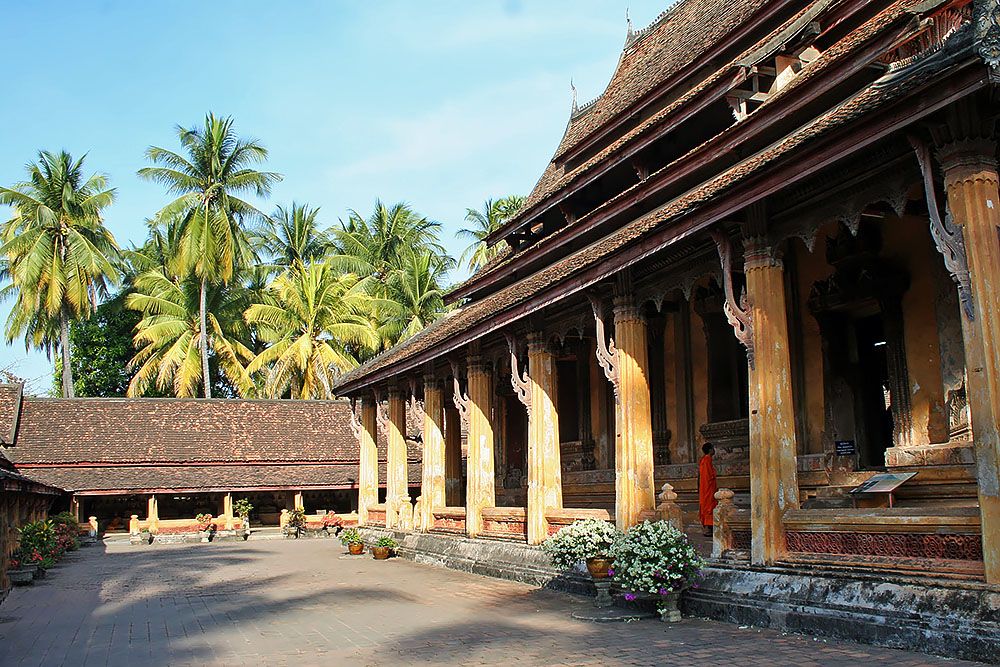
Temples and Stupas
In Laos, you’ll find the most Buddhist temples in Luang Prabang. But in Vientiane, there are also many interesting temples and stupas. We’ve listed the ones that stood out to us.
Wat Si Saket
Wat Si Saket is one of the oldest Buddhist temples in Vientiane and houses around 5000 small Buddha statues. The temple is a beautiful example of Laotian religious architecture and offers a serene and spiritual atmosphere. It is the only remaining temple in Laos from before the Siamese invasion in 1828. Unfortunately, much of the city was razed to the ground at that time, but the temple managed to escape destruction.
Pha That Luang
One of the most iconic symbols of Vientiane is Pha That Luang. This impressive Buddhist stupa is considered the national symbol of Laos. The gilded stupa is an important pilgrimage site and a magnificent example of Laotian religious architecture. The stupa is surrounded by beautiful gardens.
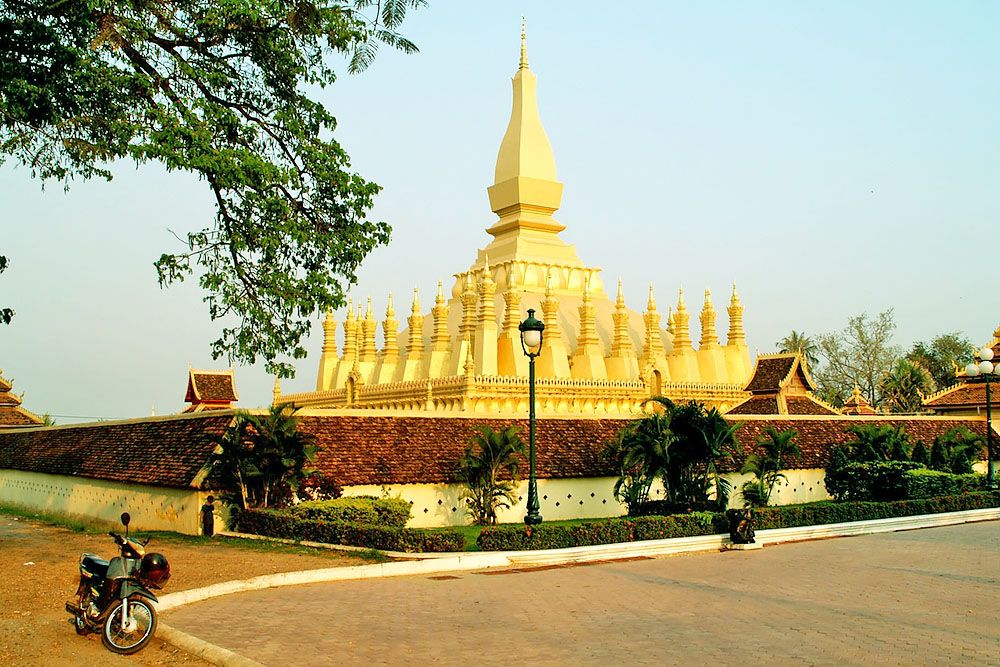
Wat Ho Phra Keo
This temple was originally built in 1565 as a royal temple. It was home to the famous emerald green Buddha, a beautiful image steeped in myths and legends. The original Buddha image is now in the Thai capital, Bangkok. Despite the relocation of the image, Wat Ho Phra Keo remains a sacred place of worship and contemplation for Buddhist believers.
Within the temple complex, you’ll find tranquillity and serenity in both the gold leaf-covered buildings and the lush gardens. Additionally, Wat Ho Phra Keo also houses a museum where you’ll find a treasure trove of religious art objects and historical artefacts.
Wat Si Muang
Dating back to the 16th century, Wat Si Muang is known for its colourful façade and intriguing legends. According to tradition, the temple was built on the spot where a young woman (Si Muang) sacrificed herself to appease evil spirits. Her sacrifice is still honoured. The temple is considered a sacred place where believers go for blessings and protection.
Upon entering the temple complex, you experience an atmosphere of serenity and devotion. The courtyard of Wat Si Muang features beautiful murals depicting scenes from Buddhist teachings and local folklore. In the central hall, there is an impressive altar. Besides its spiritual significance, the temple is also a meeting place for the local community.
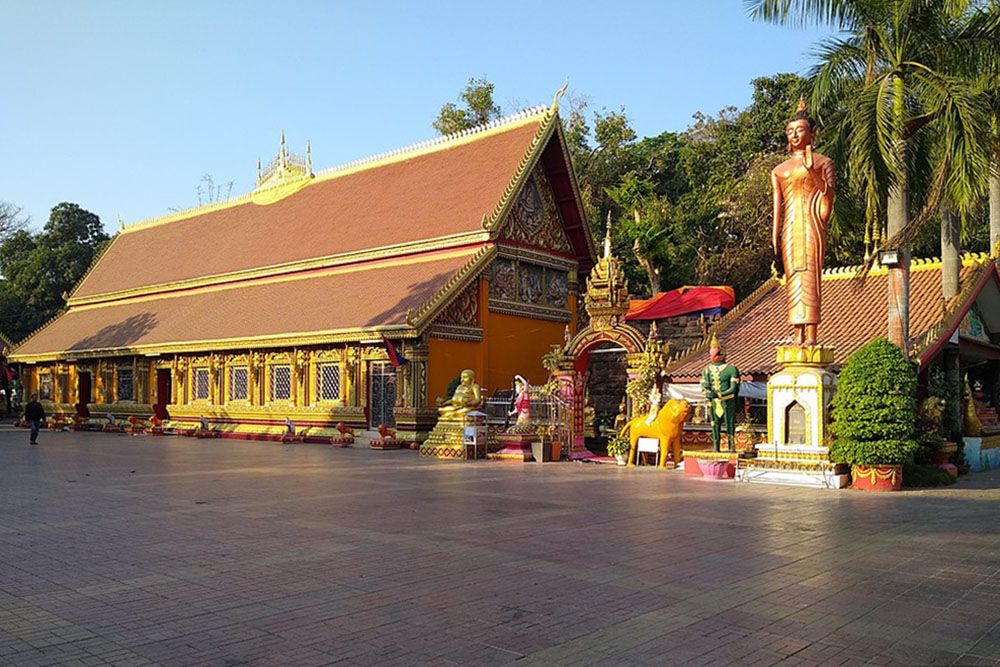
Culinary Experiences
The culinary scene in Vientiane is a true delight for food lovers. Along the streets, you’ll find numerous stalls and restaurants offering an abundance of delicious Laotian dishes. These include the renowned Laap (a spicy minced meat salad), the moderately spicy yet refreshing Tam Mak Houng (papaya salad), and various noodle dishes. Vientiane’s evening markets also offer a wealth of local delicacies and artisan products.
The Mekong
The picturesque Mekong River plays a central role in the life of Vientiane. The river is not only a natural lifeline but also important cultural heritage. Local artisans and fishermen use age-old methods passed down through generations. If you have an eye for it, you can catch a glimpse of the timeless traditions of the region. Along the river, you can enjoy delightful walks and beautiful sunsets, and sip on a refreshing Lao beer at a cosy bar. Additionally, you can take lovely boat trips on the Mekong!

COPE Visitor Centre
During the Vietnam War, Laos was heavily bombed by the U.S. The bombings left a devastating legacy of unexploded ordnance (UXO). Since the war, over 20,000 people have been killed or injured by UXO, half of whom are children. Almost daily, there are still casualties from UXO. Despite the efforts of many, less than 1% of the unexploded bombs have been cleared.
COPE, a non-profit organization in Vientiane, operates rehabilitation centres to assist UXO survivors. The organization produces orthopaedic and prosthetic devices and provides physiotherapy. At the COPE Visitor Centre, you’ll learn more about the consequences of war and the serious UXO problem in the country. The centre features a permanent exhibition, a cinema for documentaries, a shop, and a café.
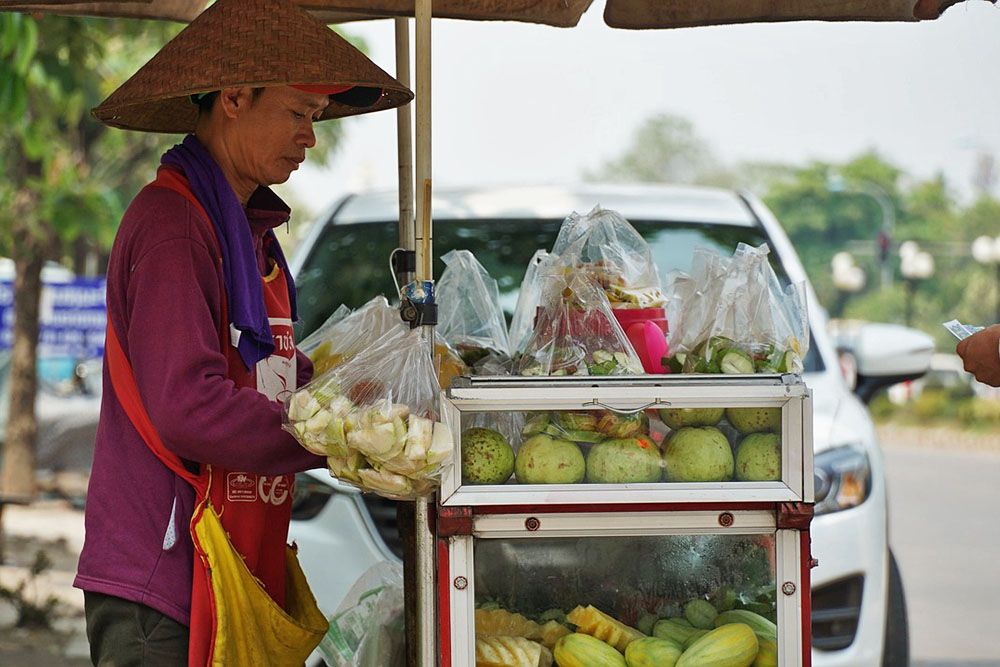
Evening market
Vientiane’s evening market is located along the picturesque waterfront of the city. The market comes to life at sunset and mainly attracts tourists. This, of course, makes the evening market less authentically Laotian. Nevertheless, it’s enjoyable to visit the market, if only for the atmosphere. As evening falls, the air fills with the scent of delicious food and it becomes cozier by the minute.
The market offers a wide range of products, from clothing to paintings. The stalls are beautifully set up and offer an abundance of souvenirs that are perfect to take home. In addition to the various market stalls, there is an abundance of delicious street food available.
Lao National Museum
If you want to learn more about the history and culture of Laos, you should visit the Lao National Museum. This museum is housed in a beautiful old French colonial building. The museum’s exhibitions highlight various aspects of Laos’ history: from ancient civilizations and kingdoms to more recent events that have shaped the country. You’ll find artefacts reflecting the diversity of Laotian culture, including traditional artworks, clothing, and religious objects. There are also galleries with interesting old photos from long gone times. Definitely worth a visit!
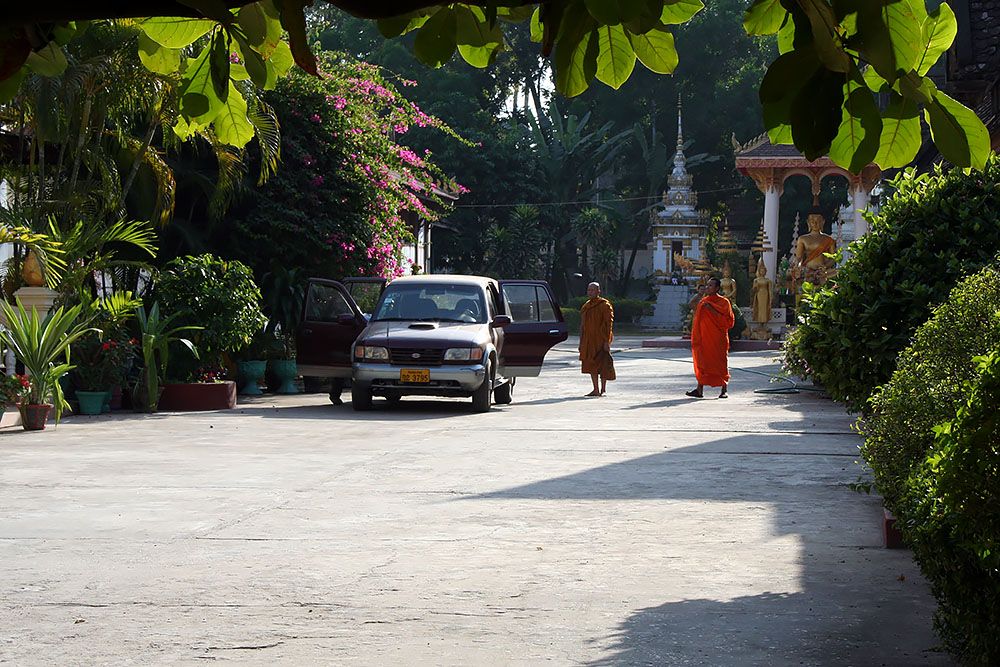
What to see and do in the vicinity of Vientiane
Vientiane is situated in a beautiful, green setting with rich native flora and fauna. Besides nature and the idyllic Mekong, there are also cultural attractions. Not in a rush to leave immediately after your visit to Vientiane? Then you shouldn’t miss the following attractions.
Buddha Park (Xieng Khuan)
Just 25 kilometers outside Vientiane lies the Buddha Park. This park is a fascinating place with an extensive collection of over 200 Buddhist and Hindu statues and artworks. The central highlight of the park is a massive reclining Buddha. Surrounding it are dozens of other statues varying in size and expression. Each statue reflects an aspect of Buddhist teachings and mythology. The park also features a meditation garden, fish pond, and a restaurant. Although the park may seem a bit kitschy, it offers an intriguing insight into Laos’ religious art traditions.
Wat Sok Pa Luang: For a profound spiritual experience, you can meditate with monks at Wat Sok Pa Luang. This experience provides a unique opportunity to experience the tranquillity and serenity of Buddhist life and gain a deeper understanding of local spiritual traditions.
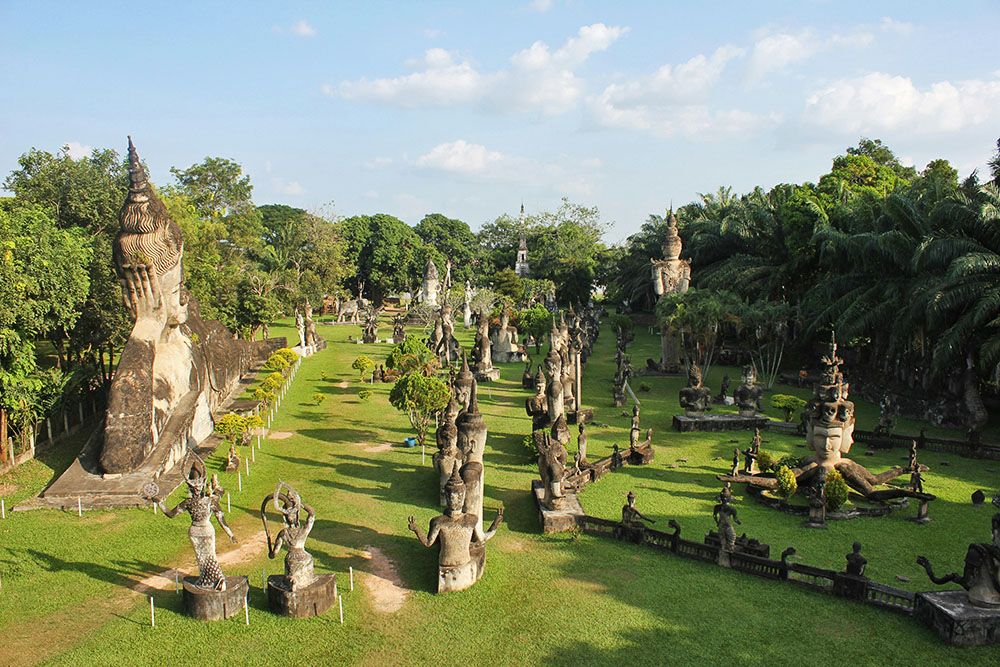
Cycling tour to Tad Moon waterfall
An excellent excursion you can make from Vientiane is a cycling tour to Tad Moon Waterfall. You’ll first cycle along the Mekong River where you’ll have a beautiful view of the river and neighbouring Thailand. The route takes you through the village of Ban Tong and continues along a canal. Here, you’ll get to know the local (farming) life.
The trail to Tad Moon Waterfall leads over dirt tracks, rice fields, and forests. Once at the waterfall, you can admire the unique rock formations. And of course, there’s time to pause and enjoy the natural beauty of the area. The journey continues to the village of Ban Mai on the Mekong. After lunch, you’ll take a relaxed kayak trip downstream back to Vientiane. This part of the trip offers scenic views along the border between Laos and Thailand. You’ll also visit one of the largest islands in the river, Don Xing Xou. This island is used for agriculture and has a beautiful beach.
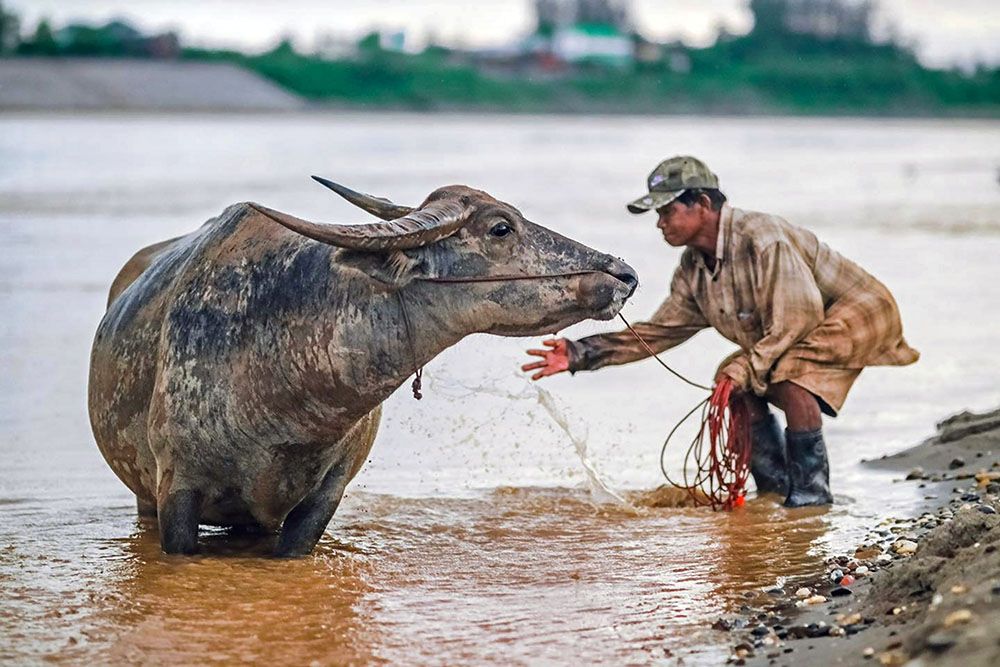
Frequently Asked Questions about visiting Vientiane
The best time to visit Vientiane is during the dry and cool period, which runs from November to February. During these months, temperatures are moderate, there is little rainfall, and the sky is often beautifully blue. You can then enjoy pleasant walks, boat trips on the Mekong, and exploring the historical temples and monuments without suffering from extreme heat or excessive rainfall.
Many of the main attractions in Vientiane are easily accessible on foot, as long as it's not too hot. For highlights that are a bit further in the city or beyond, such as Buddha Park, there are various traditional and modern modes of transport.
You can take a tuk-tuk, a popular form of transport in Vientiane. They are motorised three-wheeled vehicles that serve as taxis. They are convenient for short distances and offer the possibility to travel quickly and easily through the city. Negotiate the price in advance! Even when the amount is indicated laminated.
Additionally, cycling is a relaxed and environmentally friendly way to explore Vientiane. You can rent bikes at various locations in the city to see the sights. Often this can be arranged at your accommodation. If not, check the possibilities at Chongchareon Bicycle Shop.
Vientiane has a limited public transportation system. There are three major bus stations: in the centre, in the north, and in the south. Buses from the north and south stations depart to more distant cities, such as Luang Prabang and Pakse. The central bus station is next to the Talaat Sao Market and provides bus services to nearby towns, a few other destinations in Laos, and northern Thailand. Buddha Park is one of the attractions where you can easily take the bus. This concerns bus 14. This bus also goes to the Friendship Bridge where you can cross the border to Thailand.
For even more flexibility, you can also rent a car, scooter, or motorcycle. We have often rented a scooter locally in Laos. These are available for rent at a great many locations in the city. Often even at your own accommodation. If you want to cover longer distances, a car or motorcycle is not such a bad idea. In comparison to most other countries in Southeast Asia, traffic is fairly calm. The only thing to watch out for are the sometimes large potholes in the road.
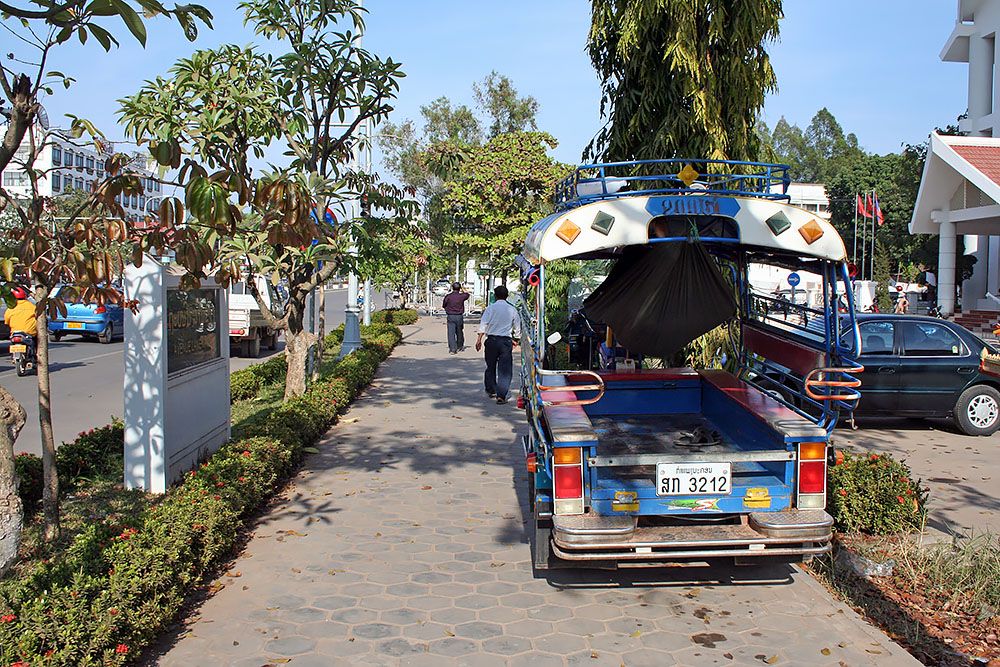
In Vientiane, there are several pleasant places to enjoy delicious food and drinks.
Eateries
- Khambang Lao - An excellent restaurant for authentic Laotian dishes, where you can enjoy fine local cuisine.
- Soukvimarn - This restaurant looks a bit stiff from the inside but offers really delicious food. It's fairly difficult to find because it's located in a small alley.
- Laos Street Kitchen - Nice spot, outdoor under a canopy. Good place near the Mekong for tasty meals.
- Not in the mood for Laotian food but craving pizza or a hamburger? This is possible at Tyson Kitchen, near Laos Street Kitchen.
- Other good restaurants in Vientiane
Cafés and coffee houses
- Kungs Cafe - A recommended café to visit, probably for a delightful cup of coffee.
- Naked Expresso - This café offers a wide range of Western and Southeast Asian dishes and has both indoor and outdoor seating.
- See You Coffee - nice spot for a good cup of coffee and a light lunch
- Other nice coffee houses in Vientiane
Bars where you can also eat well
- Windwest bar - A great place for live music, perfect for a night out.
- 525 Eat & Drink - Fairly close to the Mekong. Nice place for good food and a cosy drink.
- Other pleasant eateries in Vientiane
There are plenty of accommodation options in Vientiane, but most of them are reasonably priced. Especially the more luxurious hotels outside the city center often have prices on a European level. In the city center, you can still find good and affordable, often cozy accommodations. Here's an overview of accommodations in Vientiane.
During your visit to Vientiane, there are several attractions and experiences that you should not miss:
- Pha That Luang: A Buddhist sacred site and the national symbol of Laos, showcasing impressive Laotian religious architecture.
- Patuxai: Also known as the "Arc de Triomphe of Vientiane", offering a panoramic view of the city from the top of the arch and serving as a tribute to those who fought for Laos' independence.
- Wat Si Saket: A temple famous for its thousands of Buddha images and murals, providing insight into Buddhist art and architecture.
- COPE Visitor Centre: An impactful museum shedding light on the impact of unexploded ordnance and offering insight into the rehabilitation of landmine and unexploded ordnance victims in Laos.
- The Mekong River: Ideal for a relaxed walk, especially beautiful at sunset, offering a perfect setting to unwind and soak in the local atmosphere.
- Laotian Cuisine: Indulge in delicious Laotian dishes such as larb, khao piak sen, and Laap, to savor the local culinary delights.
- Night Market: Spend an evening at Vientiane's bustling night market, where you can explore local crafts, clothing, souvenirs, and street food.

